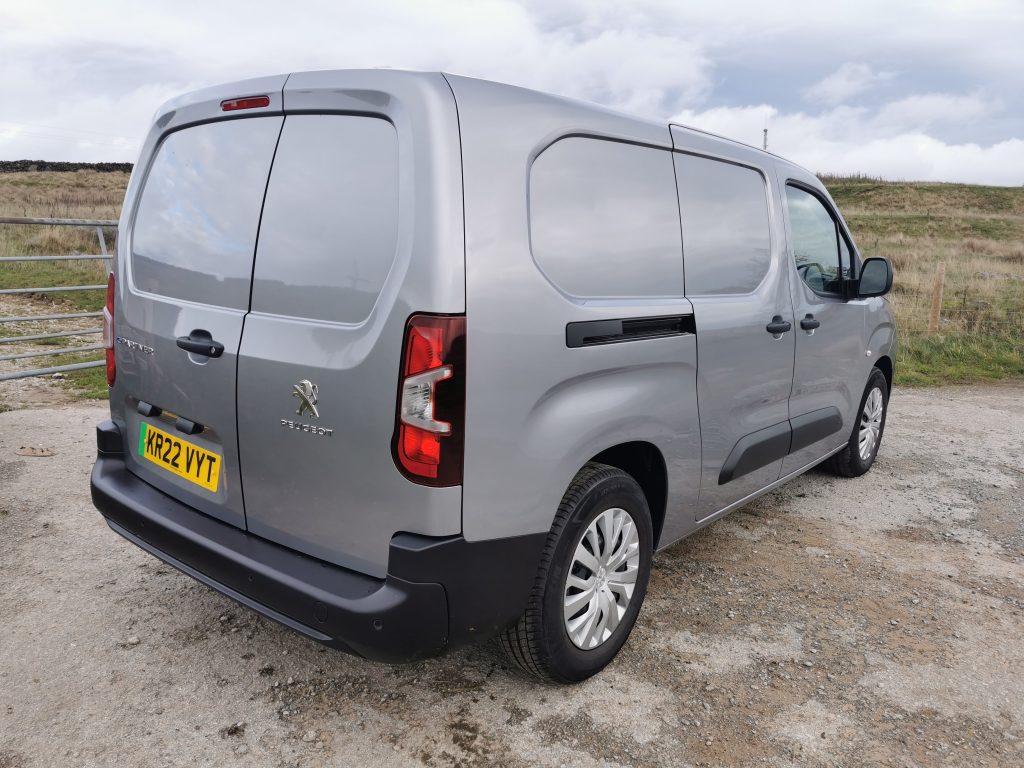Peugeot e-Partner Review
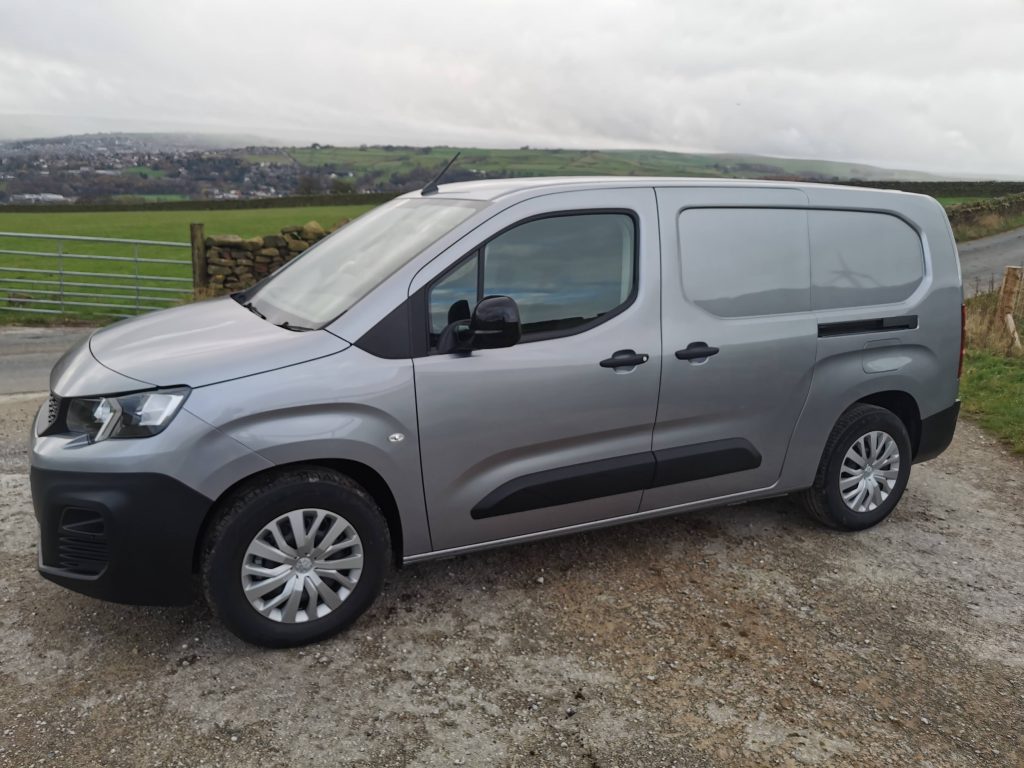
The Partner, together with its Stellantis siblings from Citroen, Fiat and Vauxhall has enjoyed continued success in the UK light van sector, even though this segment has suffered in recent years with a general decline in the numbers sold. Now, with the company embracing the inevitable move over to zero emission vehicles, the fully electric e-Partner is here.
The range of vehicles consists of Standard or Long lengths, and there’s a crewvan option in addition to the panel van. The four trim levels offered on the diesel Partner are reduced in number to just two, the basic ‘S’ model in particular notable by its absence. There’s nothing dramatic on the outside, the van looks neat, tidy and modern with Peugeot using the grille to differentiate the e-Partner from the other vans sharing the platform.
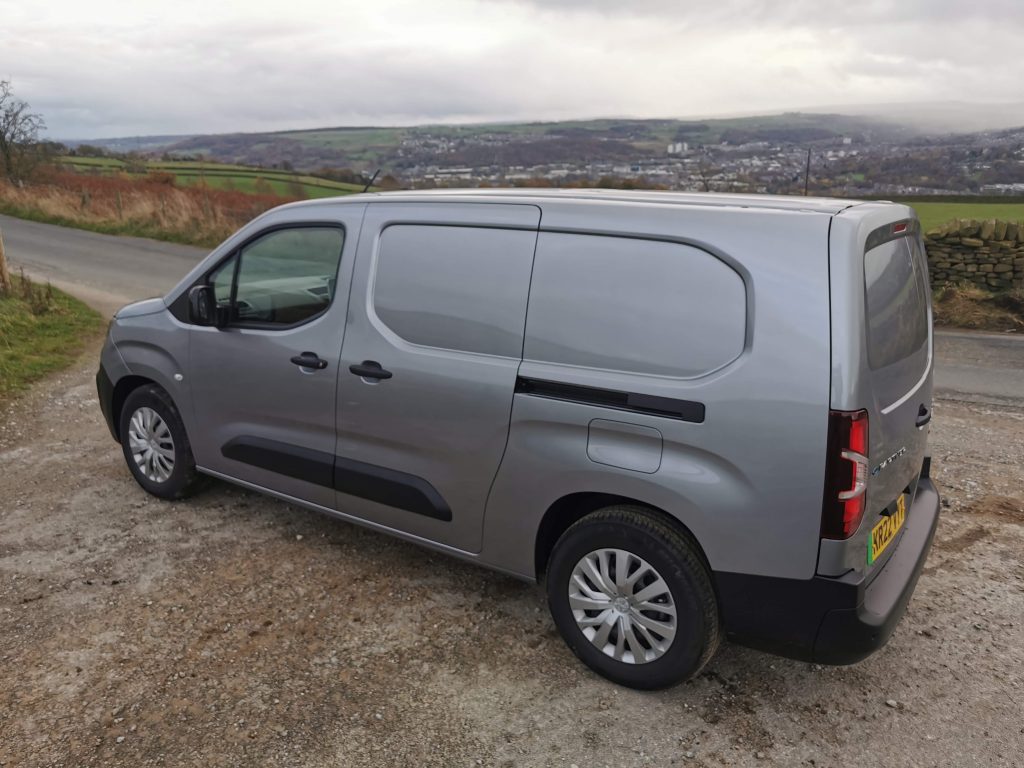
The Motor, the Range and Charging
Powered by a 136hp electric motor driving the front wheels, the e-Partner can achieve the 0-62mph sprint in just 11.2 seconds, with a top speed of 84mph, the van not having its terminal velocity restricted by a stringent speed limiter like some electric vans. Torque output, which is available instantly is rated at 260nm, making light work of motorway gradients when the van is laden.
There are 3 selectable drive modes, Eco, Normal and Power. Eco cuts the available power back to around 81hp and adjusts the air conditioning to a more power efficient setting. If you need ultimate range, this is where you need to be. Normal provides around 109hp and will be selected automatically by default when you start driving. Power mode provides maximum performance, but if you use it, your range will be reduced from the optimum.
The 50kWh battery pack is located underneath the load area, not affecting it in any way. Official WLTP Combined cycle testing gives the van a range of up to 170 miles, although the usual caveats apply of real world driving, weather, loads and traffic conditions all conspiring to bring this number down. This figure also presumes that you have pre-conditioned the cab whilst connected to an external charger, either running the air conditioning or the heater to make the cab comfortable for the driver without compromising driving range. Whilst the range offered is competitive, for those van operators covering long distances on a daily basis, the time spent on locating a working DC charger and then waiting whilst the battery is topped up might still make adopting an electric van a challenging decision to make. But for a majority of drivers using the van locally, a couple of overnight charges per week might be all that they need. The conventional 7.4kW home wallbox charger should take no longer than 7.5 hours to get the battery back up to 100%. For the record, if you can actually find a working 100kW DC rapid charger, this will replenish the battery to 80% of capacity within 30 minutes. The charging port is located behind a flap on the left side of the van.
The range available is clearly shown on the instrument panel, as is the amount of power being used or reclaimed under recuperation. An additional gauge indicates the amount of power being consumed by ancillary equipment such as heater, air conditioning, wipers and lights.
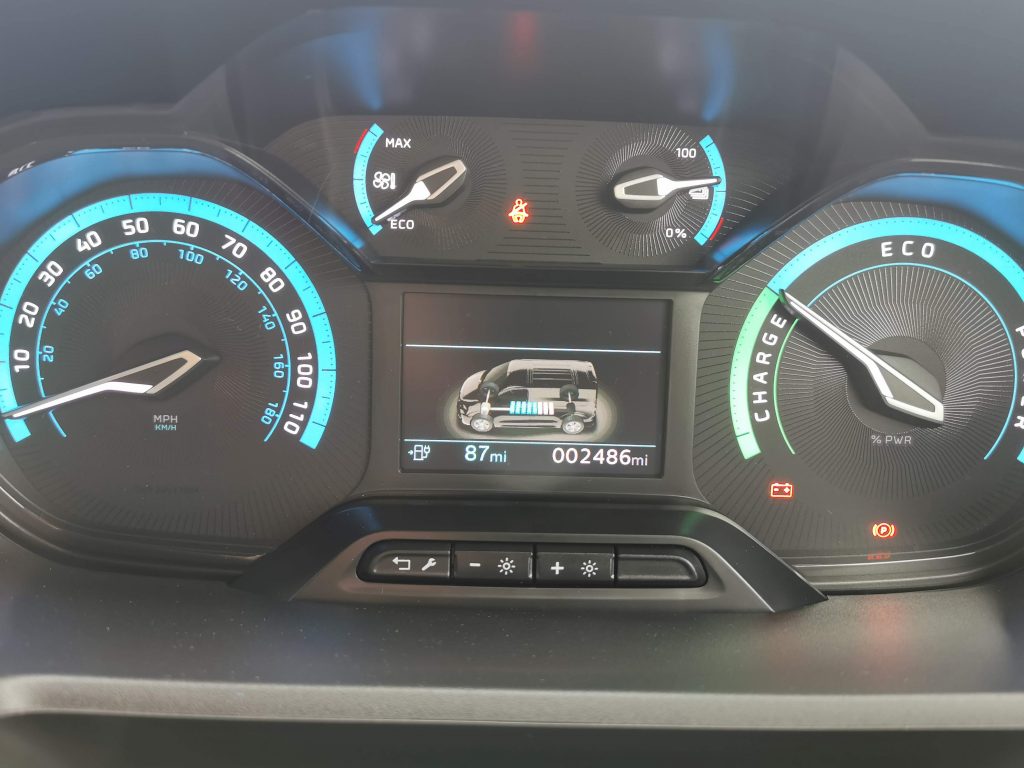
Loads and Weights
The Partner has always had a great reputation as a competent load carrier, and Peugeot has strived to ensure that this virtue isn’t compromised. The Standard van has a load length of 1817mm which helps to offer a load volume of 3.3 cubic metres. Opt for the Long version and the 2167mm of length translates into a very healthy volume of 3.8 cubic metres. Both vans had a maximum load width of 1550mm (1229mm between the wheelarches) and a load height of 1236mm. There’s a Multi-Flex folding seat / load through bulkhead facility and on the Long van it offers a total length of 3.44 metres.
The loadspace is accessed by twin rear and twin side loading doors, useful for kerbside loading and unloading, protecting the driver from potential injury when working in a live traffic lane.
Despite the weight of the battery pack, the e-Partner still manages to offer a competitive payload. There’s 803kgs to be had in the e-Partner Standard, and the Long can take an equally impressive 751kgs. Not all electric vans are permitted to tow, but the e-Partner can pull a 750kg braked trailer.
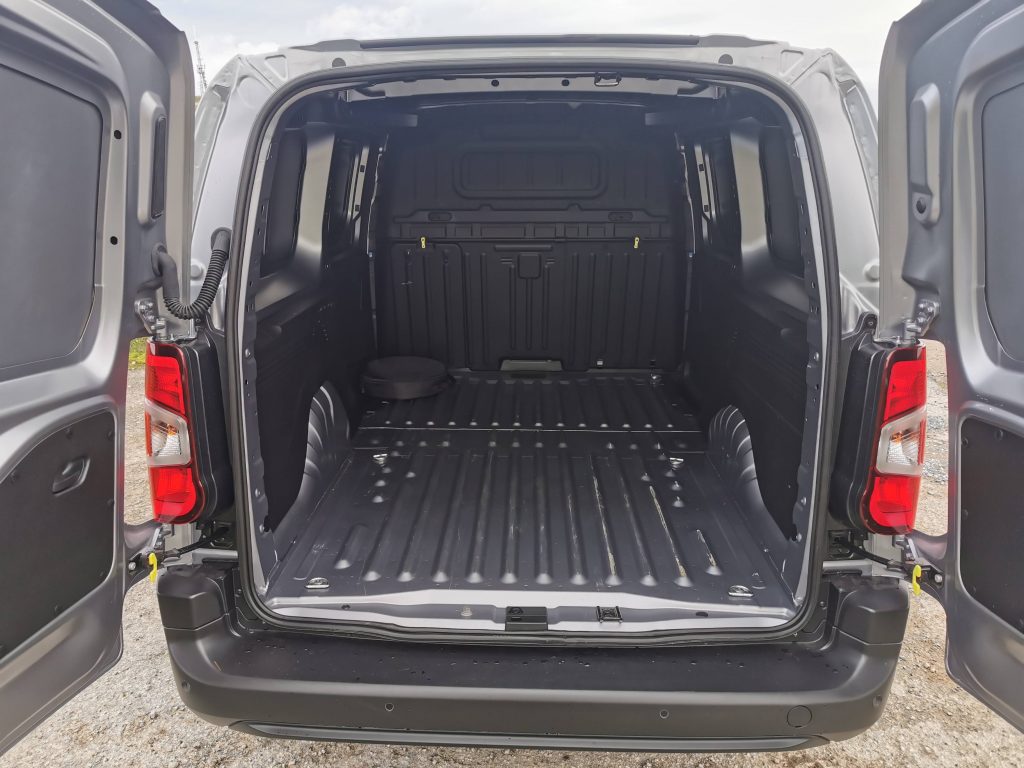
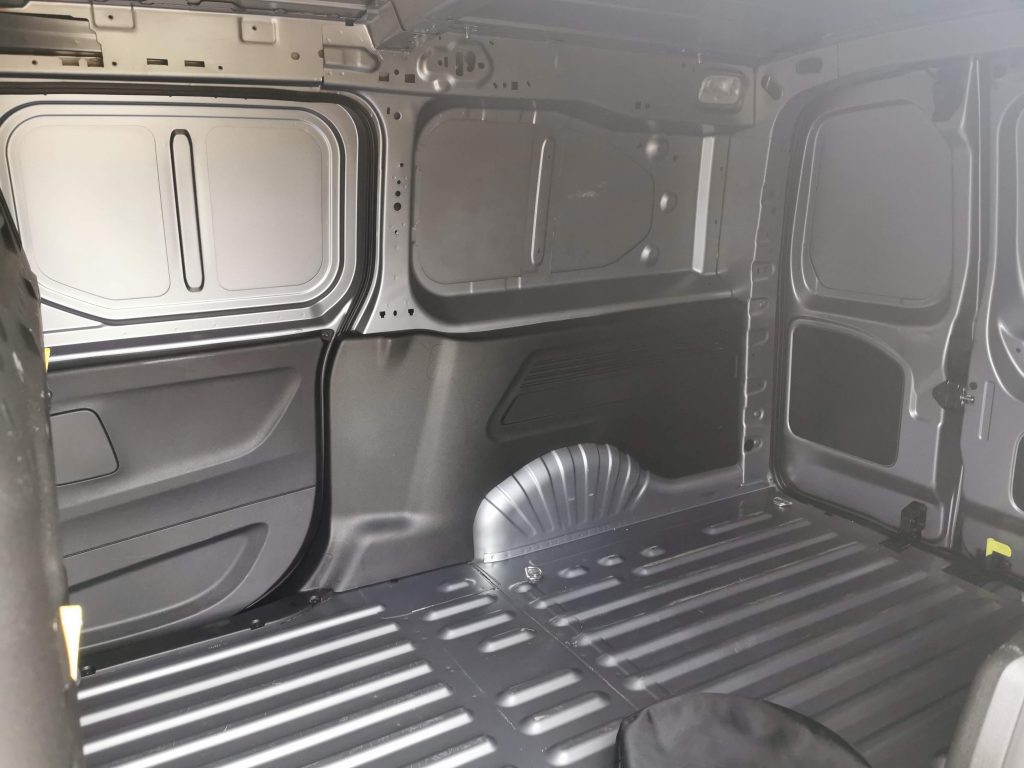
The Cab and Equipment
It’s probably fair to say that the cab isn’t cutting edge in design, it being much more practical than pretty. Having said that, it’s comfortable and it’s great to see that the multimedia screen is angled toward the driver – those who have previously driven a van where this isn’t the case will notice it as a huge improvement. The dash contains the i-Cockpit instrument panel, situated high up and with vision aided by the steering wheel with its flat top and bottom. There’s not a huge amount of storage in the cab, but door bins and cup holders will take some of the bits and bobs the driver will acquire on their travels.
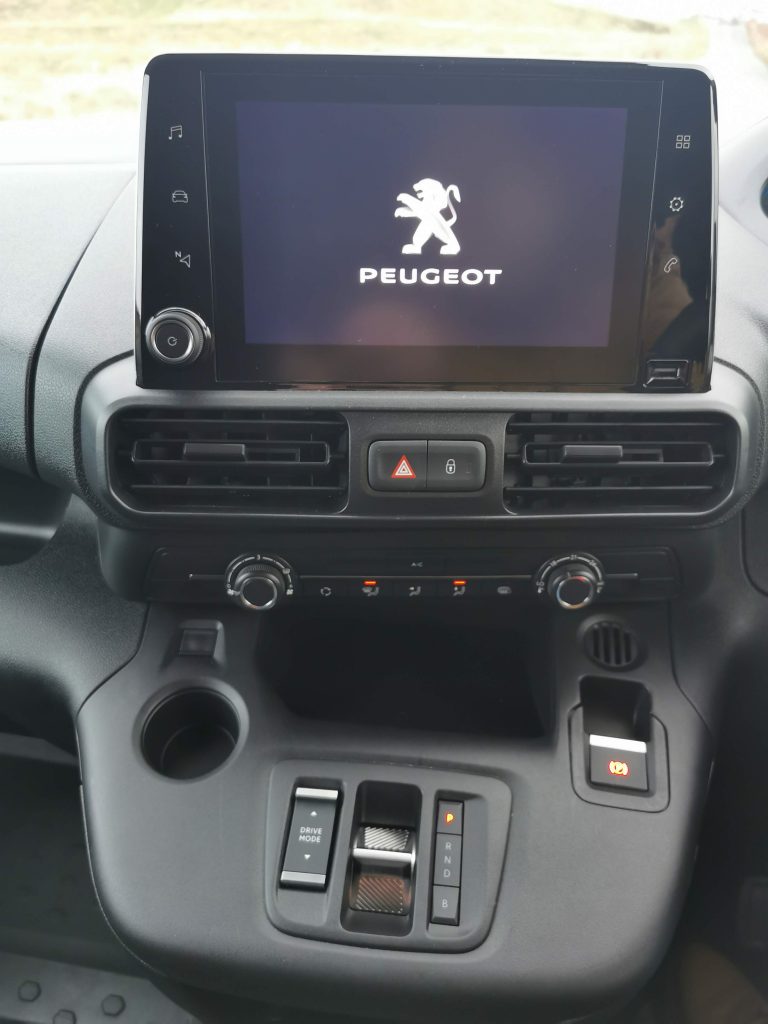
e-Partner has the controversial third seat, the subject of much discussion from owners who often deride the facility as being only suitable for a very small person. That’s probably a bit unfair, we found that an adult of reasonable height could use it for short journeys without being too uncomfortable, but anyone of considerable size (in any way) would no doubt quickly complain.
e-Partner Professional Premium has a decent level of trim and equipment, especially for an entry level model. Included are air conditioning, cruise control and an 8” colour touchscreen housing not just a DAB radio, but also the all important Apple CarPlay and Android Auto smartphone integration. There’s also an alarm, electric folding mirrors, the Multi-Flex folding passenger seat and load through bulkhead. Asphalt Premium adds 16” alloy wheels, body coloured bumpers and side rubbing strips, satellite navigation in a larger, 10” display, front and rear parking sensors and passenger side and rear cameras providing’ tri-action’ rear and nearside visibility via an additional, 5” screen.
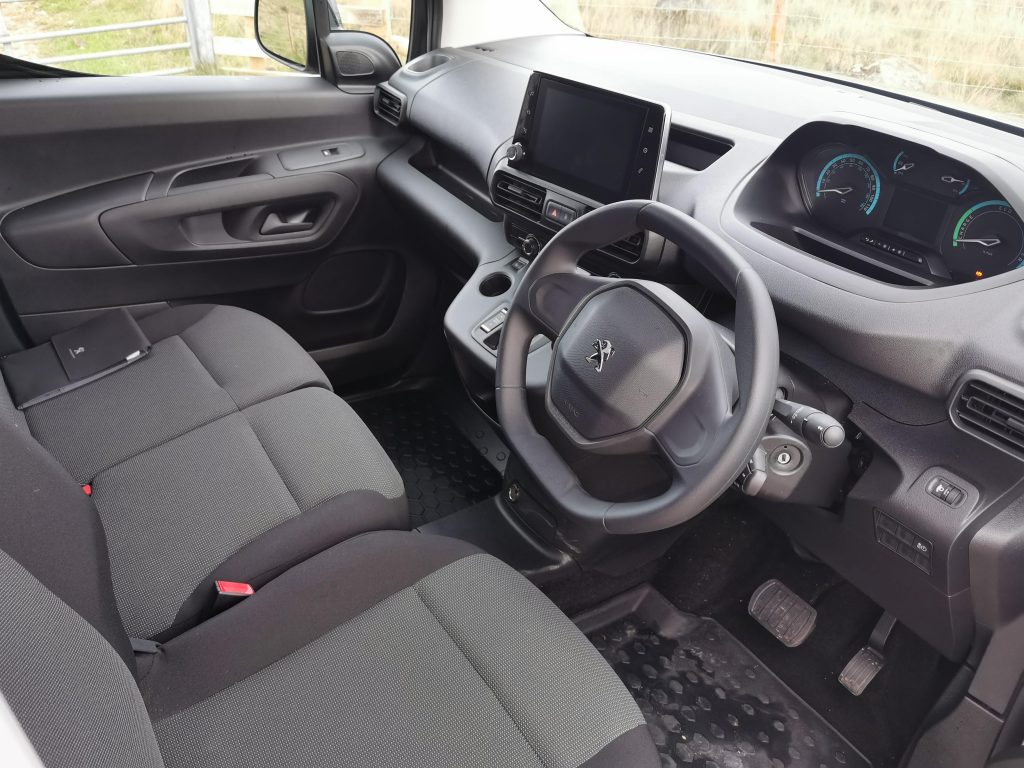
On The Road
The van ‘starts’ almost silently, and moving away is accompanied by the gentle whine that electric vehicle users will be familiar with. That instantly available torque sees rapid acceleration with that smoothness that only a vehicle that has no need to change gear ratios can offer.
There’s no criticism here of ride quality, and although tested unladen the van handles fine. Not so pleasant is the steering which felt vague, bordering on strange which meant that confidence in driving the van in a ‘spirited’ way was lacking. Perhaps this was more noticeable as the last small van tested was the Renault Kangoo which excels in this area.
Conclusion
It’s difficult to see how Peugeot could have made this van better. It’s a competent load carrier, it performs well on the road, the range offered is up with some of the best, and the equipment level is excellent. It provides a compelling argument for the short distance, local van operator (the traditional Partner customer) to consider the move over to an electric van, allowing unimpeded access to all inner city low or zero emission zones.
